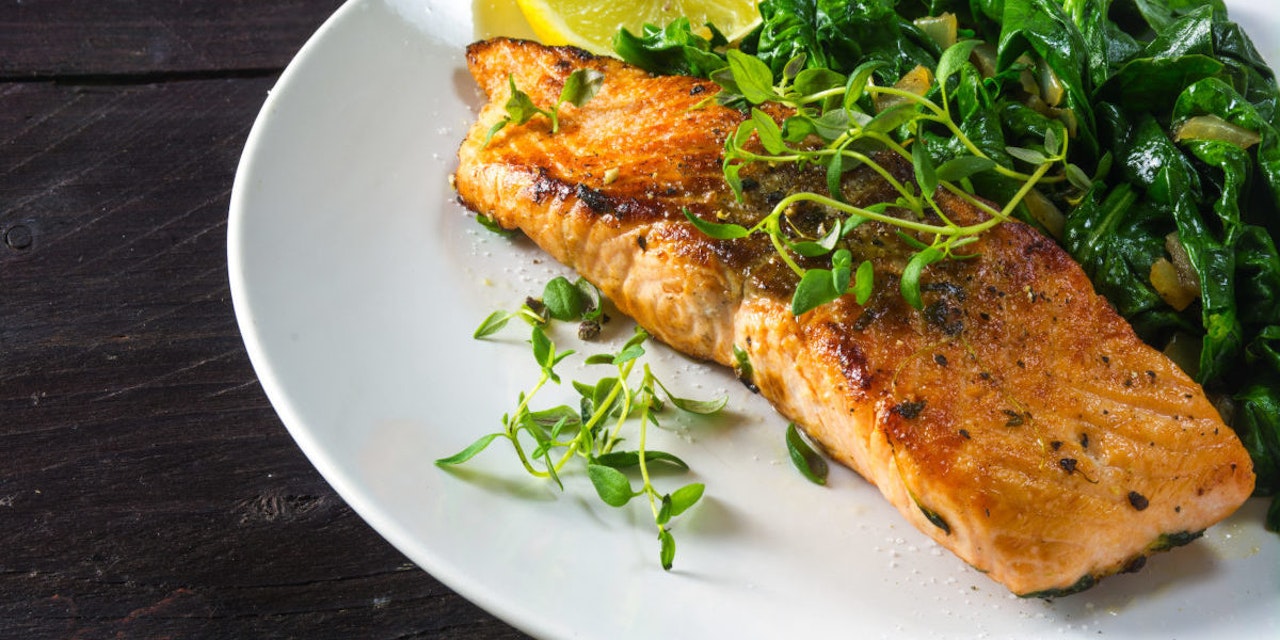10 Foods You Can Eat on a Low-Carb Diet
Just because you're going on a low-carb diet, like the keto diet, doesn't mean you can't eat your favorite foods. Here's how to find balance.
- Published: 1/31/2018
- Categories:
- 2 min. read

- Published: 1/31/2018
- Categories:
- 2 min. read
You may have heard about low-carb diets as an approach to steady weight loss, but these types of diets also offer many other health benefits. Don’t shy away from going on a low-carb diet because you’re afraid you can’t eat your favorite foods. In fact, countless tasty options can fit easily into a low-carb diet.
Why Try a Low-Carb Diet?
Going low carb helps you lose weight in a healthy way. It also brings you higher levels of energy while stabilizing your blood sugar. Healthy fats, lean meats, and complex carbs all contribute to a well-rounded low-carb diet plan.
Look to Meats for a No-Carb Diet
Nearly all types of meat can give you a filling meal with no carbs.
- Beef. This filling food offers plenty of key nutrients without any carbs. Ground beef or steaks will get you a good dose of B12, for example. If you’re craving a hamburger, get one without the bun.
- Chicken. Another meat high in many beneficial nutrients, chicken is popular worldwide for good reason. It’s a great source of protein.
- Lamb. Lamb meat gives you important nutrients such as B12 and iron. It also offers conjugated linoleic acid, a beneficial fatty acid.
Organ meats are an exception to the no-carb rule, although they are high in other nutrients.
Fish, Seafood, and Shellfish Build a Low-Carb Diet Plan
Like meat, fish and seafood varieties often have no or close to no carbs. Fish are also nutritious, with high levels of omega-3 fatty acids, B12, and iodine.
- Salmon. This fatty fish contains plenty of heart-healthy fats. As a great source of B12 and iodine that also features vitamin D3, salmon adds no carbs to your meal while bringing you nutrients you can’t find in many other foods. Trout is another zero-carbohydrate option rich in omega-3 fatty acids.
- Shellfish. Although they often have small amounts of carbs, shellfish are highly nutrient-dense.
A Low-Carb Diet Needs Vegetables
Many vegetables are low in carbohydrates, and they also give you essential nutrients. Stay away from starchy root vegetables such as potatoes and sweet potatoes, which have higher carb levels. Cruciferous vegetables and leafy greens, on the other hand, are especially low in carbs.
- Broccoli. You can eat this cruciferous vegetable raw or cooked. It will bring you high levels of fiber along with vitamins C and K.
- Brussels Sprouts. These highly nutritious vegetables also feature high levels of vitamin C and vitamin K.
- Cauliflower. The versatile vegetable contains copious amounts of vitamins C, K, and folate. Make it alone, or use it as a low-carb substitute in dishes such as fried rice.
Eggs as a Low-Carb Superfood
As one of the most nutritious foods you can find, eggs make an essential component of any low-carb diet. They’re packed with nutrients that boost brain and eye health and contain almost zero carbs.
So many foods make a tasty addition to your low-carb diet plan. Look to low-carb foods that boost your nutrient intake while bringing you higher levels of energy.
All of the content and media on Lifesum is created and published for information purposes only. It is not intended to be used as a substitute for medical advice or treatment. Users should always consult with a doctor or other health care professional for medical advice. If you have or think you are at risk of developing an eating disorder, do not use the Lifesum app and seek immediate medical help.